by Carolyn Edlund
Artist robin holder‘s powerful work opens a dialogue about changing perceptions on race and culture, and moving towards a more compassionate society.
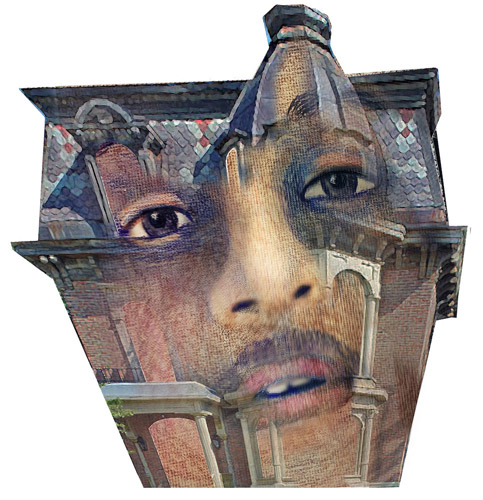
“Equal Under the Law?” from the USA: United States of Anxiety series, mixed media
For nearly 25 years, robin holder has created art that addresses the history of diversity and the complex and pervasive issues of living in one of the most diverse nations on earth. The daughter of an African American Christian father and a white Russian American Jewish mother, the artist often draws directly from her personal experience.
The thrust of her work is to offer an unflinching gaze into the lives and realities of immigrant populations and people of color in the U.S. Her imagery, both universal and specific at the same time, calls upon the viewer to acknowledge the validity of their experiences. “Everyone can viscerally engage with my images. I’m not asking people to agree with it, but to consider something unfamiliar, without fear,” she said.
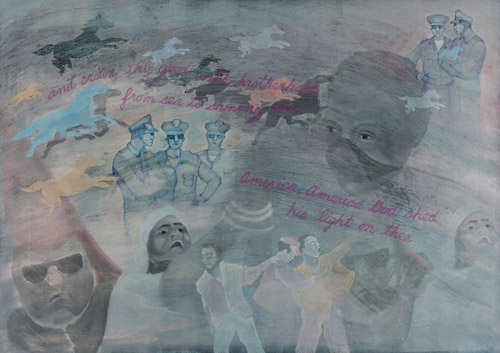
“America, America” monoprint with stencils and prismacolors, 32″ x 44″
Beyond Our Own Experience
Through her artwork and the dialogue it creates, we are challenged to extend our perspective. We must acknowledge difficult facts and strengthen our understanding of others in order to break down barriers and start the healing process. That begins with an awareness of the incredibly diverse backgrounds and personal experiences of our fellow citizens.
Learned behaviors run deep. “Americans generally do not acknowledge the horrific violence in our history,” she said. “Nor do they realize the institutional inequities and racism and lack of distribution of resources in this country.” Her art focuses on bringing these truths to light and enabling the cultivation of common ground where important conversations can begin.
“We have saturated urban centers where we don’t know the details of each other’s daily lives and challenges,” holder said. “For example, you may get on the subway with people from other countries, cultures and faiths. But you don’t know their inner dialogue, based on the history of their country.”
How do those dialogues vary? As a biracial American, holder has a unique perspective. “When I get up in the morning, I pray for the nine black men in my family,” she explained. “My family extends the whole range of colors. The color of our skin and texture of our hair determine how others interact with us. I may go into a café or store with those family members, and yet we get different treatment.”
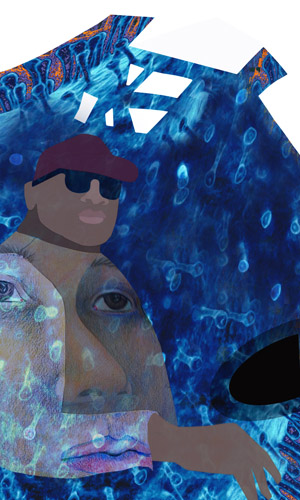
“Truck Driver” from the series “COVID19 First Responders: We’re in it Together”, mixed media
On the Front Lines
As America faces deep divisions on racial and cultural fronts, we are also dealing with the devastation of a pandemic that has taken the greatest toll on people of color. Holder’s series COVID19: First Responders closely examines the jobs, identities, and realities of the often unappreciated front line players.
The artist explains, “What we need to keep in the forefront of our thinking is that people who are identified as first responders are those necessary to keep society functioning. Yet most of these people have very low salaries. Unless they are union employees, they usually have no health benefits. We depend on janitors to keep spaces clean. We depend on nurses and healthcare workers to stay alive, and we depend on supermarket cashiers and stockers, and on UPS drivers. Many of those are brown and black-skinned people.”
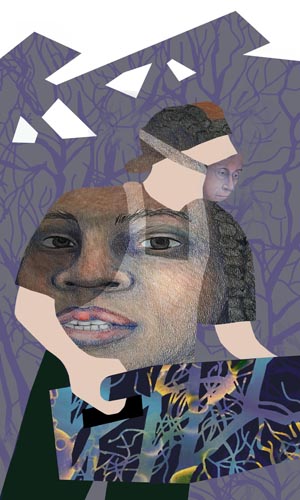
“Supermarket Stock Clerk” from the series “COVID19 First Responders: We’re in it Together”, mixed media
She points out that in the Latino community, many people are living in multi-generational households. They have to cope with a highly contagious illness and older relatives at high risk.
In contrast, more highly educated and privileged citizens have a distinct advantage. “These people can leave the city and have a better chance of surviving. They have the ability to remove themselves from risk, while continuing to function professionally in a digital world. They have the resources to isolate in comfort. It makes for a very different dynamic than waking up with six people in a four room apartment. What kind of stress does this place on a family?” she asks.
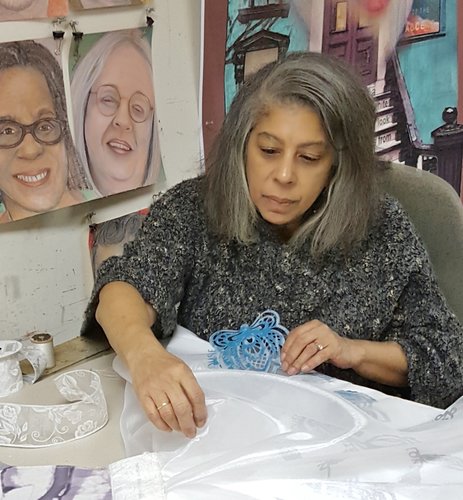
Artist robin holder at work in her studio
Why Art is Instrumental to Social Change
The vision behind the artist’s studio practice is to motivate a communal dialogue of varied perspectives that encourages a more humane understanding of our society.
“For many artists, their mission is to reflect the world we live in as that artist sees it,” she said. “The wider a range of life experience the artist has had, the more comprehensive their viewpoint. This is crucial, because the U.S. is so diverse. We need to consider ourselves as part of a wide-ranging community, because that’s who we are. We are one of the most diverse countries on the planet. If we want to be successful as a society, people must have what they need.”
“We must observe, and be able to see when people are in pain,” she said. “Stop identifying with political parties, and see each other as human beings. What is meaningful is how you interact with the person in the grocery story, at the theater. Ask yourself, ‘How can I listen?’ and embrace the learning that stems from another culture. We have to accept that we have many customs and viewpoints, and come together on a common platform.”



Intriguing, interesting and timely presentation. Does Robin have any social media links?
Bela, find robin on Facebook https://www.facebook.com/robinholderme
and on Instagram https://www.instagram.com/creative3intention/
Who we are shapes, guides, and influences the work that we do. robin, you have a gift for speaking truth through your artwork. Thank you for being in front of us!
DMJones
Great to see the work of an artist I have followed for decades and the work is still strong and socially relevant. These troubling times are giving each of us many things to explore and consider and I hope we can finally learn to live in peace and safety together as we should be. It would be great if we can kill the coronavirus and racism at the same time, what a stroke of genius. I am so sorry that we have advanced white supremacy and white privilege at the cost of our black brothers and sisters. We are all equal and need to promote this premise at every opportunity. Anyone who thinks otherwise is a fool and a tyrant. Peace, Robin, and great to see what is on your mind.
what a delight to hear from you Marilyn! I know how much you feel the pain of this current events! be well and stay safe! robin
Robin’s work is right on time and ageless. Therein lies the enormity of our county’s struggle towards an evolved identity that displaces crushing realities of a century relegated to the dustbin of historic strife. There is hope as she captures our all too familiar plight and symbolism while focusing on the aggrieved, the oppressed, the other. What is relevant is the mirror onto our souls…for we know…everything.
What is relevant is the mirror onto our souls…for we know…everything. Is an interesting statement Gary if we know everything why haven’t we solved anything?